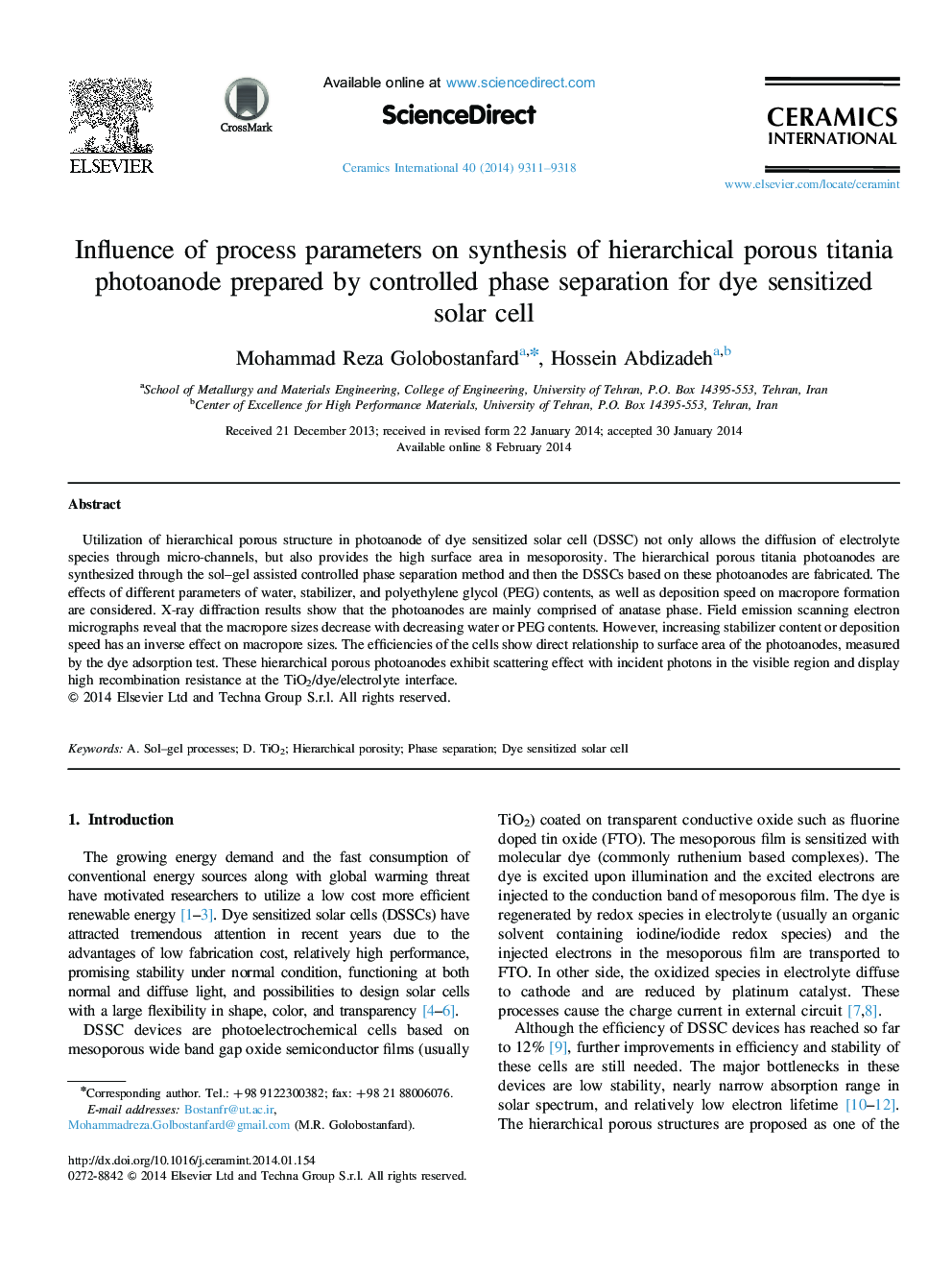| Article ID | Journal | Published Year | Pages | File Type |
|---|---|---|---|---|
| 10625158 | Ceramics International | 2014 | 8 Pages |
Abstract
Utilization of hierarchical porous structure in photoanode of dye sensitized solar cell (DSSC) not only allows the diffusion of electrolyte species through micro-channels, but also provides the high surface area in mesoporosity. The hierarchical porous titania photoanodes are synthesized through the sol-gel assisted controlled phase separation method and then the DSSCs based on these photoanodes are fabricated. The effects of different parameters of water, stabilizer, and polyethylene glycol (PEG) contents, as well as deposition speed on macropore formation are considered. X-ray diffraction results show that the photoanodes are mainly comprised of anatase phase. Field emission scanning electron micrographs reveal that the macropore sizes decrease with decreasing water or PEG contents. However, increasing stabilizer content or deposition speed has an inverse effect on macropore sizes. The efficiencies of the cells show direct relationship to surface area of the photoanodes, measured by the dye adsorption test. These hierarchical porous photoanodes exhibit scattering effect with incident photons in the visible region and display high recombination resistance at the TiO2/dye/electrolyte interface.
Related Topics
Physical Sciences and Engineering
Materials Science
Ceramics and Composites
Authors
Mohammad Reza Golobostanfard, Hossein Abdizadeh,
